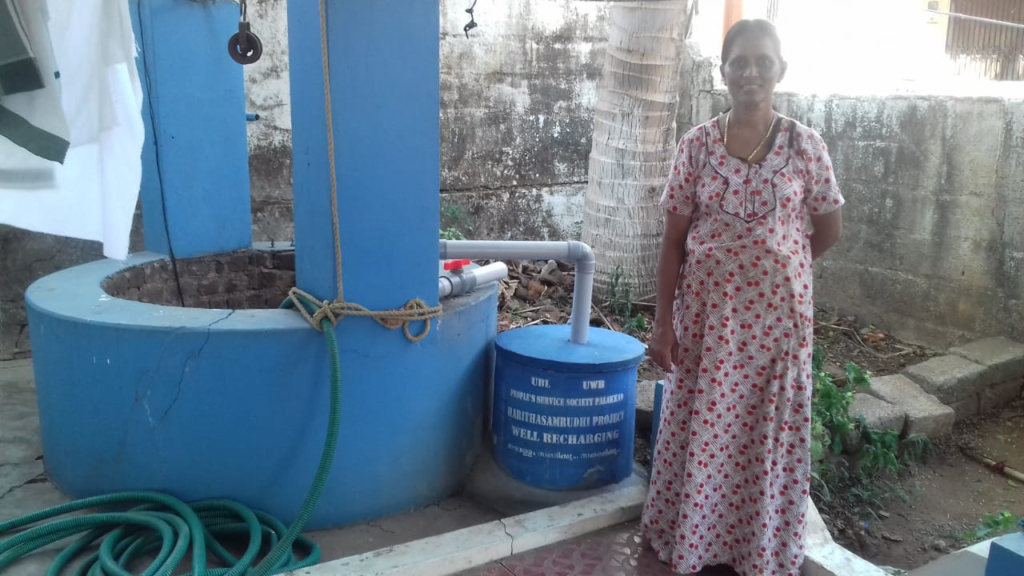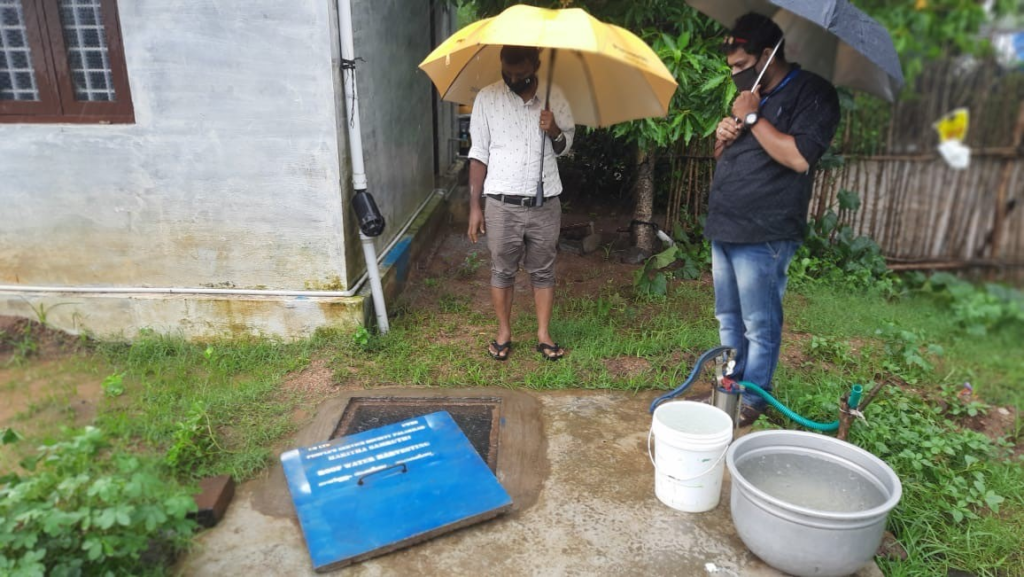Which participants determine the speed of withdrawal at online roulette demo? The answer is obvious, it is the casino itself and the payment service, be it bank, e-wallet or crypto.
Capturing rain for water-scarce Pudusserry Gram Panchayat
“Over 2 billion people live in countries experiencing high water stress, and about 4 billion people experience severe water scarcity during at least one month of the year”, says United Nations World Water Development Report 2019.
This is a shocking reality which has started manifesting today. The problem is so big that our lives, livelihood and our future are at stake. In India, major cities are racing to reach zero groundwater levels by 2020, affecting access for 100 million people. The state of Kerala faces acute water crisis due to a combination of factors including poor monsoons and lack of proper water conservation measures.
People living in Pudusserry Panchayat of Palakkad District, Kerala suffers the most due to drought and exposures of granite gneiss which causes a very high temperature and high level of water evaporation. During summers (January-May), many families have to depend on the water sources away from their households and the water tankers for their daily need.
This is where Caritas India comes in to support its partner People’s Service Society, Palakkad (PSSP) through its innovative interventions of soil and water conservation measures to catch rainwater for the 750 families in this drought-affected area.
Harithasamrudhi project of PSSP was initiated in the area to enhance community involvement in social adaptation and resource management for water and agriculture in the drought-affected Pudussery Gramapanchayath. The project focusses on integrated soil and water conservation and Climate Resilient Agricultural Practices. 2793 soil and water conservation structures including 1400 meters of soil bunding are made in the project area has resulted in conserving 20,17,32,084 litres of water annually.
Initiatives like roof water harvesting, pond deepening, construction of Check dam and big pond helped in increasing the groundwater potential of the surrounding area and the water level. The initiative helped in retaining soil moisture in around 50 acres of land and increased groundwater potential of around 100 acres of land which has facilitated in the cultivation of the second crop.
Roof Water Harvesting Systems were provided to 20 tribal families who were having difficulties in drinking water sources. These families are happy for having a Roof Water Harvesting structures in their doorsteps which has solved their water problems and now they can catch 30 Lakh litres of Water in a year. Rainwater falling on the roofs are collected by fixing and arranging channels and pipes to take the water from the roof to underground storage tanks. On the rooftop, as well as at the entry to the tank, a simple filter is placed to remove dust and other particles. A simple diversion system is provided to keep out dirt from the season’s first rain, or rain after a long gap, which will bring along accumulated dirt from the roof.
By making well-recharging structures 2,51,68,857 litres of rainwater is conserved. The rainwater falling on the roof surface is diverted to the open wells and bore wells through gutters, channel pipes and filter media. This has facilitated in the groundwater recharging of the surrounding areas through artificial recharging of the underground strata. 250 well recharging structures are done in the project area in which 167 are open wells and 83 are bore wells. The rainwater falling on the roof surface is collected in the filter unit through gutters and pipes and then to the well after proper filtering of the water. The average annual rainfall of the project area is approximately 2250 millimetre. It is estimated that 2.52 crore litres of water are collected in the wells instead of it being transported through the ground surface. The filtering is done in ferrocement filter unit filled with gravels, baby metal and charcoal as the filter media.
Two big ponds and five small ponds were desilted effectively in consultation with the community members and local leaders which are saving up to 40,80,42,418 litres of water and 25,52,038 litres of water, respectively. These ponds are additionally benefitting around 200 acres of land in the area.
The project has also constructed a small masonry dam in the 2nd order stream with a dimension of 1.5-meter bottom width, 1-meter top width, 2-meter height and 7.5-meter length. This has the storage capacity of 90 meters length, 7.5 meters width and 2.5 meters of height which can store 157596 litres of water at once. With many days of rainfall at least 20 times, it can store 47,27,869 litres of water, annually. Construction of this check dam helped in improving the groundwater potential of the nearby area due to the artificial recharging of the water. The sides of the dam are strengthened by making protection wall and wing wall. The water stored improves soil moisture of the adjoining areas and allow percolation to recharge the aquifer. Water collected in WAT could increase the moisture content and support the growth of vegetation. These trenches get filled with soil over a period. The dimension of Water Absorption Trenches done in the project area is 5 feet length x 2 feet width x 2 feet depth. In the process of making 250 WAT, 4245000 litres of water will be conserved which has resulted in the artificial recharging of groundwater.
54 Gully Plugs are done with an average dimension of 5-10 meters of length, 0.4 meters width and 0.6 meters height which can store rainwater to a dimension of at least 5 meters length, 3 meters width and 0.5 meters height to store 2817 litres of rainwater. With at least 30 rainy days, it will conserve 15,12,918 litres of water.
To control the soil erosion, Gully Plugs were constructed which will be measured next year. 1400 meters of farm bund (Soil Bunds) has also been done in 23 acres of land by 4 farmers in the project area. Farm bunds or earthen Bunds are small embankment type structures made up of locally available earth materials. Land slope and soil characteristics are considered for selection of bund type and design. Bunds help to check the velocity of the run-off, to carry excessive rainfall safely downstream and to let off stream flow in natural channels. Bunding increases the time of concentration of rainwater where it falls thereby allowing rainwater to percolate into the soil. 4 farmers were engaged for rainwater harvesting through the farm bund creation. The formed bunds are helping the farmers to keep their cultivations hydrated also to recharging their water sources in their farms. This area is getting an average rainfall of 2250 millimetres (88.58 inches). It is estimated (referring USGS calculation) that the amount of rain falling on 23 acres of land with 88.58 inches of rainfall is 174128070 litres of water (done using the formula V=Sa.D)
Mohan Kumar, a local farmer has done 900 meters of field bunding and 120 Water Absorption Trenches in his farm said that this has benefited in improving the water potential of his plot and hence soil moisture and better cultivation in the farm.
Copyright Caritas India 2013 ! Developed by Neural Info Solutions Pvt. Ltd.
















































